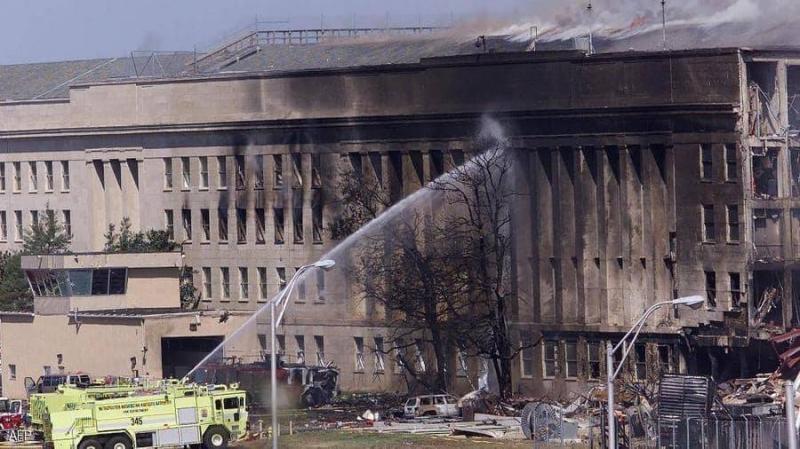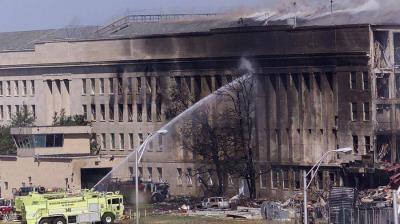Former U.S. Army Vice Chief of Staff General Jack Keane revealed new, previously untold details about the September 11 attacks that he experienced while at the Pentagon during the targeting of one of its buildings in 2001. Keane's testimony was shared during a discussion session on the September events, organized by the U.S. Army War College, and Sky News Arabia obtained a documented copy of his remarks.
#### The Atmosphere of September 11
The former Vice Chief of Staff stated that September 11, 2001, began as an ordinary day at the Pentagon with meetings starting at 7 a.m. About half an hour after one meeting concluded, one of his staff rushed into his office and said, "Something terrible is happening in New York," indicating that a plane had struck the World Trade Center.
Regarding the targeting of the Pentagon, he noted that after the attack on the World Trade Center, many U.S. leaders and troops took refuge in the military operations center, which consists of several underground floors, saving many lives.
When discussing the moment the Pentagon was hit, Keane explained that he spoke with the operations center commander who informed him about a plane that was headed toward Ohio but then turned back toward the East Coast. During their conversation, the same plane struck a Pentagon building, and they heard the sound of the explosion.
Keane said that his office, which was about 100 yards from the explosion site, shook violently, and debris fell from the ceiling. While the damage was not severe, the room was filled with smoke, prompting the Pentagon to issue an evacuation alert.
#### Wet Shirts for Protection
The former military official mentioned that two of his aides, a colonel and a major, took shirts, soaked them in water, and placed them over their faces to cope with the smoke. They went to assist in evacuating the building that had been hit, and his office manager told him, "We need to go to the Army operations center to control the forces," which was done, according to him.
Keane also recalled feeling fear in people's faces at that time. Officers helped absorb the disaster, both inside and outside the Pentagon, to the extent that some of their clothes were stained with blood, and neckties were used as tourniquets for wounds.
He continued with his account, stating that some people suffered severe burns from the Pentagon attack, and the training experience of U.S. Army officers and soldiers helped save many lives and prevent fatalities.
By the end of the first day, according to Keane, it was not possible to know the true number of casualties, but it later became clear that the Army had lost 85 of its members, marking the largest daily loss for the U.S. military. This necessitated a strong response to this attack.
#### A Life-Saving Building
After the situation calmed down, the American general explained that the chief engineer of the Pentagon took him on a tour of the explosion site, where he saw distorted walls and openings in the high ceiling. He learned at that moment that the Pentagon consists of five rings separated by corridors. In the third corridor, Keane observed the aircraft's body that had penetrated the building while its wings and engines remained outside.
Keane revealed a remarkable coincidence that saved thousands of lives, stating that the U.S. military was fortunate because the section of the Pentagon that was targeted had been renovated just days before it was hit. This particular section had "reinforced steel in the concrete columns" due to a shortage of steel during World War II, making the building sturdier in the face of the explosion, allowing most people inside to survive.
According to Keane, thousands of additional casualties could have occurred had other Pentagon buildings been targeted instead of this one, which can be described as a "life-saving building."




